Installed alongside an Epping Carpenter pump that was later scrapped, this water pump was built by Allis-Chalmers, which for many years had Edwin Reynolds as its chief engineer. Driven by a Corliss steam engine, these large city water pumps were installed in Jacksonville's water supply improvement program in 1915, and each pumped 5 million gallons of water a day until 1930 when the first of the electric-driven peripheral pumping stations began operating. Steam engine operation was discontinued in 1956.
USA

Old Plant in Foreground - Landmark Reynolds-corliss Engine and
Allis Chalmers Pump Located in the Building in the Background.
View Looking North From Hogan's Creek Era_date_from: 1917

Alvord Lake Bridge, along with many of Ernest Ransome's reinforced concrete buildings, survived the 1906 San Francisco earthquake and several subsequent tremblers with no damage. Built in 1889 by Ernest L Ransome of New York, this reinforced concrete arch bridge in San Francisco's Golden Gate Park is believed to be the oldest concrete bridge in the United States that used steel reinforcing bars to improve the behavior of the concrete. The reinforcement consists of a series of square cold-twisted steel reinforcing bars, an invention of Ransome.

This collection includes many examples of advances in mechanical refrigeration for residential and commercial applications, dating from about 1890 to 1960. Such devices dramatically improved food storage safety and convenience and set high standards for mechanical reliability. The RRM collection contains products of such pioneers in the refrigeration industry as Frigidaire, Philco, Sunbeam, and Tecumseh. An archive is available to help researchers trace the history of the refrigeration industry.

The first authenticated discovery of gold in the U.S. occurred on the Cabarrus County farm of John Reed in 1799, sparking the nation's first gold rush. During its peak years, more than a million dollars of gold was recovered a year, making North Carolina a leader in gold production until 1848. This mill, built by the Mecklenburg Iron Works of Charlotte, North Carolina, is original except for the timber work. Two groups of five 750-pound stamps with 5- to 7-inch lift, rose and fell thirty-five times a minute to yield a finely crushed ore.

The first authenticated discovery of gold in the U.S. occurred on the Cabarrus County farm of John Reed in 1799, sparking the nation's first gold rush. During its peak years, more than a million dollars of gold was recovered a year, making North Carolina a leader in gold production until 1848. This mill, built by the Mecklenburg Iron Works of Charlotte, North Carolina, is original except for the timber work. Two groups of five 750-pound stamps with 5- to 7-inch lift, rose and fell thirty-five times a minute to yield a finely crushed ore.
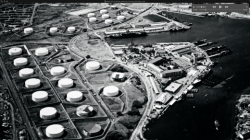
Conceived in the early years of World War II as a plan to bury four fuel containers horizontally in a hillside at the U.S. Navy facility at Pearl Harbor, Hawaii, the Red Hill Underground Fuel Storage Facility ultimately encompassed the design and construction of 20 vertical storage tanks - each large enough to contain a 20-story building - buried in the volcanic hillside and connected by tunnels to a harbor-side pumping station more than two-and-a-half miles away.
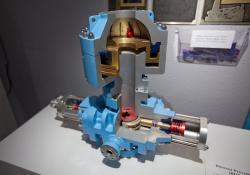


When opened in 1909, the Queensboro Bridge had the two longest steel cantilever spans in the world - 1,182 feet from Manhattan to Blackwell's Island and 984 feet from Blackwell's Island to Queens. These would remain the world's longest cantilever spans until the completion of the Quebec Bridge in 1917. The Queensboro Bridge has an overall length of 3,724.5 feet. It originally carried two elevated railway lines, two trolley lines, six carriage lanes and two pedestrian walkways.

On 19 August, the AIAA Historic Aerospace Sites Committee dedicated Kitty Hawk, NC, as a historic aerospace site, following a decades-long negotiation with the U.S Park Service. A historic marker was unveiled at a 0930 hrs ceremony as part of the First Flight Society’s National Aviation Day at…
Read More
On December 18, 1928, Arthur Rawson, a factory pilot for the Cierva Autogiro Company, and then Harold F. Pitcairn, flew a Cierva C.8W Autogiro from…
Read More
Bell Aircraft, founded in 1935 by Lawrence Dale “Larry” Bell, based its primary manufacturing facility in Wheatfield, New York, where several important aircraft were designed and produced. During the World War II era, the plant produced the P-39 Airacobra and the P-63 Kingcobra fighters. The P-…
Read More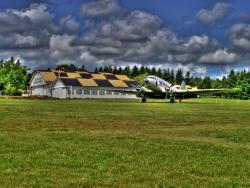
Pearson Field, named for U.S. Army Lt. Alexander Pearson Jr., a prominent early aviator who died in an airplane crash in 1925, is the oldest continuously operating airfield in the Pacific Northwest, and one of the oldest in the United States. In 1905, the field, then known as the Fort Vancouver…
Read More

College Park Airport was founded in 1909 when the Wright Brothers came here to train the first military officers to fly in the givernment's first airplane. The airport is the oldest continuously operated airport in the world, and has come to be known as "The Field of Firsts" due to it being the…
Read More
Established in 1946 to provide a comprehensive test and evaluation site for tactical missiles, Point Mugu has been instrumental in the development, test, evaluation and in-service support of systems including Regulus, Sparrow, Phoenix, Bullpup, Harpoon, SLAM, Tomahawk, Standard, and Rolling…
Read More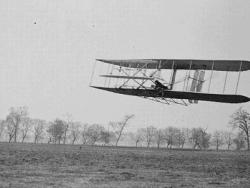
On this 84-acre meadow in 1904 and 1905, the Wright Brothers successfully mastered the mechanics of controlled, powered, heavier-than-air flight. The brothers also built the world’s first airport here, and in 1910 the Wright Company School of Aviation established a flying school on…
Read More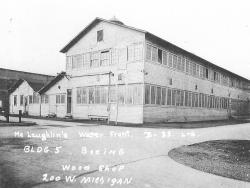
This former shipyard was the first home of the The Boeing Company, founded in 1916. Affectionately called the Red Barn, this structure was built in 1909, and became the historic birthplace of Boeing aircraft production. Starting with the Boeing Model C, all early Boeing production…
Read More
The 1940 Air Terminal is a beautiful and rare example of classic art deco airport architecture from the golden age of flight. Designed by noted architect Joseph Finger, the Terminal was built to meet Houston’s growing role as a major center for air commerce in the 1930s. Its grand…
Read More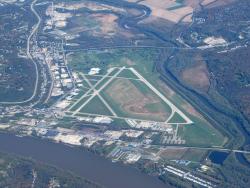
Lunken Field, now also known as Cincinnati Municipal Lunken Airport, opened in 1925 on ground purchased from the Cincinnati Polo Club. The nation’s largest municipal airport at the time, it attracted several aerospace enterprises, starting with early aviator J. Richard “Dixie” Davis, who…
Read MoreThe Cincinnati Observatory, “The Birthplace of American Astronomy,” is the oldest professional observatory in the United States. Ormsby MacKnight Mitchel, the “Father of American Astronomy,” founded the observatory in 1842. John Quincy Adams laid the cornerstone for the…
Read More
This rocket propulsion test complex was created to flight-certify all first and second stages of the Apollo Saturn V rocket. The first test-firing occurred on April 23, 1966. Subsequent to the Apollo Program, these test stands were modified to support the testing requirements of the…
Read More
On March 16, 1926 Dr. Robert H. Goddard, also known as "the father of modern rocketry," launched the world’s first liquid propellant rocket from a point 1000 feet S.S.E. of the plaque on the property of the Asa M. Ward Family. Erected by the American Rocket…
Read More
This site, formerly known as Oakland Municipal Airport, served as the gateway to the Pacific during aviation’s pioneering age of trans-Pacific flight. Among other notable events, Albert Hegenberger and Lester Maitland departed from the airfield on 28 June 1927 on the first flight…
Read More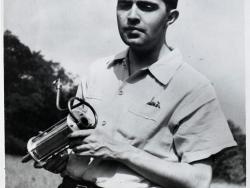
The first company in the United States dedicated solely to the production of the liquid rocket engine, Reaction Motors, Inc. (RMI) was formed in 1941. Its four founders were rocket enthusiasts and members of the American Rocket Society. RMI developed the rocket motors that powered…
Read More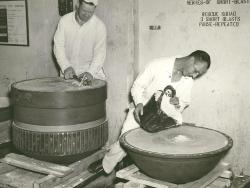
Built in 1880 as the Piccatinny Powder Depot, this site was the major supplier of smokeless powder to the military for many years. Since World War II, Picatinny Arsenal has been at the forefront of research, design, and development of a wide variety of advanced munitions for ground, airborne and…
Read More
On 15 November 1950, the SSFL conducted its first official test with a Rocketdyne-designed XLR43-NA-1 large liquid propellant rocket engine, which later became the Redstone engine. Encompassing 2558 acres, 18 large static test stands, 5 component test laboratories and an advanced…
Read More
On this site, which was the Dutch Flats Airport, Charles A. Lindbergh made the first flight of his Spirit of St. Louis airplane, constructed in 60 days by dedicated employees of Ryan Airlines, Inc. The 20-minute flight on 28 April 1927 was witnessed by those who built the aircraft.…
Read More
The Langley Memorial Aeronautical Laboratory, now the core of the Langley Research Center, was a unique facility that served as the nexus of aerodynamic research in the U.S. from its beginning in 1917 to its transformation into NASA’s Langley Research Center in 1958. It achieved…
Read More

